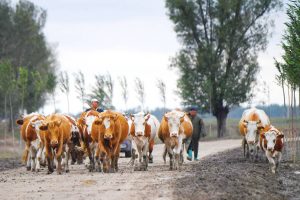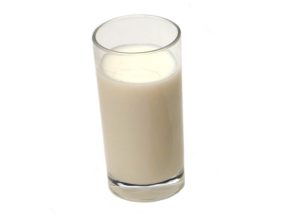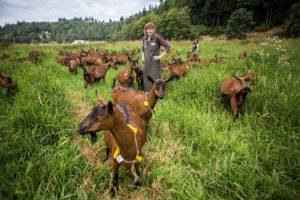The bank’s forecast is 20c higher than Fonterra’s forecast range midpoint and those of other major banks – ASB, Rabobank and Westpac. Milk price futures are currently priced at $7.05/kgMS, having peaked at $7.11/kgMS in early December. Most banks could also be lifting their forecast payouts in coming weeks.
ANZ agriculture economist Susan Kilsby says global dairy commodity prices have continued to firm – gaining 3.9% in the first Global Dairy Trade (GDT) event of 2021.
“This follows on from prices firming in the latter part of 2020,” says Kilsby.
Kilsby says it remains cautious about the longer-term outlook and still sees scope for dairy commodity prices to soften in the second half of 2021, which could impact the milk price for next season.
But the farmgate milk price for the 2020-21 season is becoming more certain as about 70% of the product that will be produced from this season’s milk supply is now contracted.
Most of the FX requirements for this season will also have been put in place, thereby limiting the impact of the rising New Zealand dollar on the farmgate milk price for the 2020-21 season.
However, the rising NZD will curb returns for next season.
“Commodity prices may also ease next season – particularly if the milk supply in the Northern Hemisphere continues to rapidly expand,” she says.
“Economies still have a long way to go to offset the economic impact of Covid-19 and further lockdowns are likely to dampen demand for dairy products.”
Global milk supply has also continued to expand but so far demand is keeping pace.
Kilsby notes that there has been an enduring lift in milk supply in some of the major dairy exporting regions of the world, including the US, EU, Australia and New Zealand.
“It was feared that this extra supply would not be able to be absorbed by the markets but thus far demand appears to be holding up well, despite some consumption channels being compromised by social distancing restrictions put in place to prevent the spread of Covid-19.”
The additional milk from the US is currently matched by additional demand created by the Government-funded scheme to provide food boxes to those in need. These food boxes must contain drinking milk and other dairy products such as cheeses and yoghurts.
Funding for this programme was recently extended to the end of April. The dairy portion of this stimulus programme is expected to absorb 2.5–3% of the total milk being produced in the US when considered on a milk equivalent basis. This is very similar to the rate of growth in milk supply seen recently. In the second half of 2020, milk supply in the US increased by just over 2%.
In Europe the expansion of milk production has been more modest, says Kilsby, with growth of about 1% observed in 2020.
And while there were disruptions to demand patterns in the early lockdowns, the supply channels have now adjusted to the increase in retail demand at the expense of food service.
“The recent growth in EU milk production has mostly been achieved through increased yields as cow numbers have decreased. In 2021, growth is expected to remain modest,” she says.
Kilsby says any significant growth in the EU will no doubt result in larger volumes of product being exported, which potentially would be negative for global prices. However, at present production is at its seasonal low and output won’t peak until about April/May.
The resurgence of Covid and tighter restrictions on people movements that have been put in place to prevent the spread of the new, more contagious strains could result in some reduction in demand for dairy products, but in general demand has remained relatively strong through previous lockdowns.













